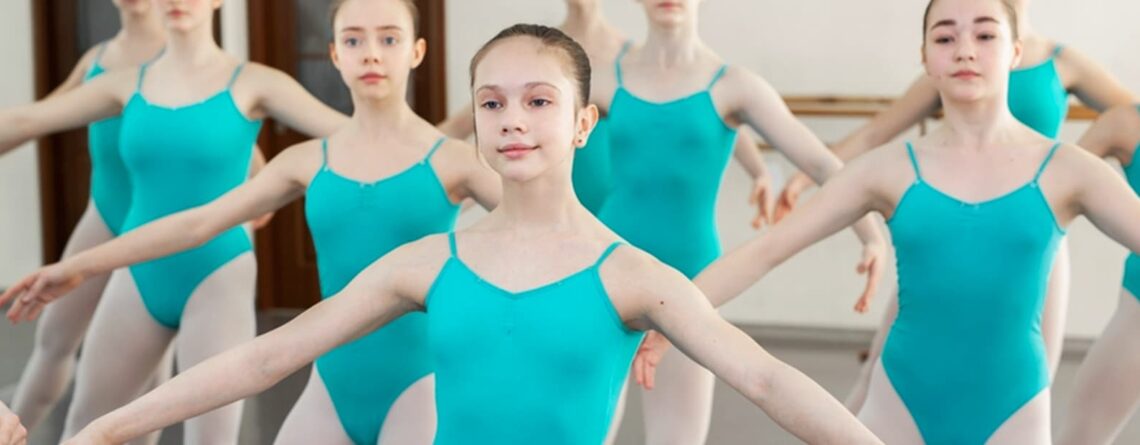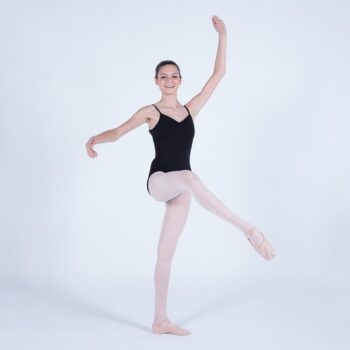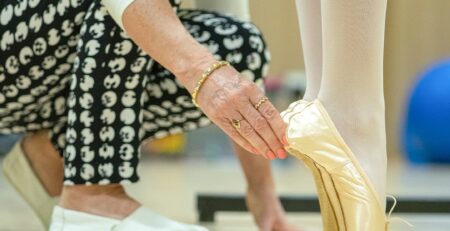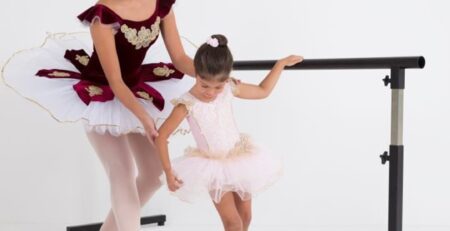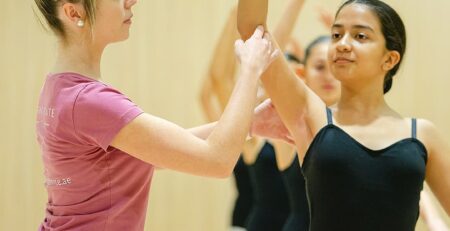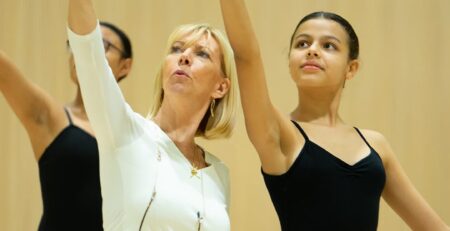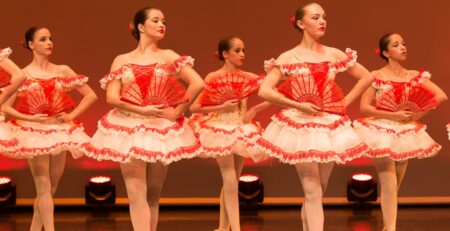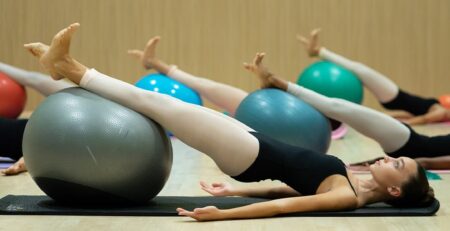What To Wear To Your First Ballet Class: Tips & Tricks
Getting ready for your first ballet class can be exciting, but you may be unsure about what to wear. Dressing correctly for the ballet class is essential for comfort, safety, and performing the correct technique. While the class attire can vary depending on the studio’s dress code, there are some general guidelines to remember when selecting your outfit. This blog will review what to wear to your first ballet class to ensure you feel confident and ready for this new adventure.
Why Dress Code is Important
Dress codes are essential in ballet for several reasons, including:
- Ballet involves a lot of movement and physical exertion, so you need clothes that won’t get in your way or cause injury.
- A dress code helps create a sense of unity and discipline among the dancers.
- Dressing in ballet clothes can help you feel more like a ballerina and get you in the mood for dancing!
What to Wear to Your First Ballet Class

Now that you know why dress codes are necessary, let’s discuss what you should wear to your first ballet lesson.
Leotard
A leotard is a tight-fitting, single-piece garment that covers the torso. Its primary function in ballet is to help the teacher assess your body’s alignment and correct your posture. Leotards are available in different styles, including camisole, tank, short-sleeve, or long-sleeve, and are offered in various colours. Although black, pink, and white are the most prevalent colours for leotards, you can choose any colour that suits your style.
Tights
Tights are a type of hose that cover your legs and feet. They come in different materials like nylon, spandex, or cotton. Tights are usually worn in pink or flesh tones, but black or white are also acceptable. Ensure you choose tights that fit well and don’t bunch up or sag.
Ballet Shoes
Ballet shoes are specially designed footwear that provides support and flexibility for ballet movements. When starting ballet, you will wear ‘flat ballet shoes’, which are soft and help show off the shape of the feet. Once you are more advanced and your teacher feels ready, you can only progress onto pointe shoes.
Flat ballet shoes come in two types: canvas and leather. Canvas shoes are lighter and more breathable, while leather shoes are more durable and provide more support. If you’re wondering how to wear ballet shoes, follow these steps:
- Sit down and put on your tights.
- Put on your ballet shoes. Usually, beginners would have an elastic strap across the instep to hold the shoe on, not ribbons at this stage.
- Stand up and make sure your feet are flat on the ground.
- Walk around to test the fit and feel of the shoes. The shoes should feel comfortable and fit your foot like a glove to show off and enhance the shape of your feet.
Hair
Ballet dancers wear their hair in a bun to keep it out of their faces and necks. To make a ballet bun, follow these steps:
- Start by smoothing your hair into a mid-height ponytail (in line with the top of your ears).
- Twist the ponytail and wrap it around the base of the ponytail to form a bun.
- Secure the bun with bobby pins and a hairnet.
- Spray your hair with hairspray to keep it in place.
Optional Items
Some dancers wear additional items to enhance their ballet attire.
- Ballet Skirt: A skirt can be added to the leotard, providing more coverage and modesty for those who may feel self-conscious. The skirts come in various lengths, from short to longer lengths. Usually, the skirt colour would match or complement that of the leotard.
- Warm-Up Clothes & Accessories: You may wear warm-up clothes to class. These will provide some coverage and modesty on the journey to and from the studio and keep your muscles warm and ready for the class. A crossover top traditionally works over the leotard when a dancer feels cold. It should be form-fitting, not loose, so it shows off the graceful line of the arms and back when dancing. An excellent and trendy way of keeping your feet warm and ready for a ballet class is to wear a pair of Warm-Up Boots over your ballet shoes to and from class.
What Not to Wear to Your First Ballet Class
Now that you know what to wear to your first ballet class, let’s talk about what not to wear.
- Baggy Clothes: These can get in the way and hide your body’s alignment, making it difficult for your teacher to correct your posture.
- Jewellery: It can distract and get in the way of ballet movements. Avoid wearing necklaces, bracelets, or dangling earrings.
- Street Shoes: Wearing street shoes in a ballet class is a big no-no. They can damage the dance floor and make it difficult for you to move correctly.
How to Choose the Right Attire: Tips & Tricks
Several factors must be considered when choosing the right attire for your ballet class. Here are some tips on how to make the best choices:
Checking With Your Instructor
Before purchasing any ballet attire, check with your instructor to see if there are any specific requirements or dress codes for your class. It can help you avoid unnecessary purchases and prepare for class. We provide specialised dress codes for our ballet dance classes for beginners at Turning Pointe.
Dressing Appropriately
Make sure you dress appropriately for your ballet class. Avoid wearing anything too loose or baggy that may restrict your movement or get in the way. On the other hand, avoid anything too tight or uncomfortable that may hinder your ability to move freely. Your hair should always be tied back securely off your face and up in a bun, enabling the teacher to see the line of your neck and shoulders. It will let her know if you are using your back muscles properly.
Choosing the Right Size
Choosing the right size is essential for your comfort and ability to move freely. Make sure you try on different sizes and styles to find the one that fits you best. Avoid anything too loose or too tight. Remember, your soft ballet shoes should fit you like a glove so the teacher can ensure you are using your feet properly and the shoes enhance the shape of your instep.
Quality vs Affordability
It’s crucial to balance affordability and quality when selecting your ballet attire. Opting for durable, high-quality materials can enhance the longevity and comfort of your dress. At Turning Pointe, we offer top-quality ballet costumes to ensure the best possible experience for our customers.
Tips for Maintaining Your Ballet Attire
Your ballet attire is an investment, and it’s essential to take good care of it to ensure it lasts as long as possible. Here are some tips for maintaining your ballet attire:
- Washing and Caring for Your Leotard, Tights, and Shoes: For the Leotard, Tights and other warm-up clothes, follow the care instructions on the label to wash and care for them. Use a gentle detergent and avoid fabric softener or bleach—Air-dry your attire to prevent shrinkage or damage. NEVER wash your complete ballet shoes, as the leather sole will shrink, and they won’t fit! For canvas ballet shoes, carefully wipe the tops off with a sponge and slightly soapy water, then dry them gently with a hairdryer. We suggest you put them on before they are fully dry to stretch them out again, then leave them to dry naturally. Leather shoes can be cleaned with baby wipes, a hand sanitiser and a soft cloth.
- How Often to Replace Your Attire: Your ballet attire will eventually wear out, especially if you dance regularly. How often you need to replace your garment will depend on how often you dance, the quality of the materials, and how well you care for them. If your dress feels uncomfortable or worn out, it may be time to replace it.
- Storing Your Attire Properly: Proper storage can help extend the life of your ballet attire. Hang your leotard and tights to prevent wrinkles, and keep your shoes in a breathable bag or container. Avoid exposing your dress to direct sunlight or extreme temperatures.
Common Mistakes to Avoid in Ballet Dress Code
While it’s essential to follow the dress code in ballet, dancers make some common mistakes. Here are a few to avoid:
- Wearing Undergarments Over Tights: Undergarments should always be worn underneath tights to avoid distractions or discomfort during class. Make sure to choose seamless undergarments that won’t show through your tights.
- Choosing Ill-Fitting Clothes or Shoes: Ill-fitting clothes or shoes can hinder your ability to move freely and may cause injury. Choose attire that fits well and provides proper support and comfort.
- Neglecting Hair and Makeup: Having long hair in a ballet bun and short hair held back off the face with a hairband is essential in creating a professional appearance in ballet. Pull your hair back neatly and avoid any distractions or loose strands. If you are wearing makeup, keep it minimal and natural-looking.
Conclusion
Appropriate attire is crucial for a successful and enjoyable ballet class. Wear a leotard, tights, ballet shoes, and a bun, while avoiding baggy clothes, jewellery, and street shoes to ensure comfort, safety, and adherence to the dress code. Turning Pointe, has you covered if you’re looking for quality attire for your ballet classes in Dubai and Abu Dhabi. We offer a wide range of comfortable and durable ballet dresses to help you perform at your best. By following the tips in this blog, you can enhance your performance, demonstrate dedication to the art form, and enjoy ballet gracefully and elegantly.
Are looking to embark on your dance journey, Turning Pointe provides the best ballet lessons Abu Dhabi and Dubai. Contact us and register today!


